- Company
- Products
- Technical report
- Indusrial cleaning
- Micro Joining and Assembly Technology
- Ultrasonic technology
- Trouble solution
- Cleaning
- Removing
- Attaching
- PCB Columns
Published on :
Flux cleanability evaluation methods include
As we introduced in the last issue of "What is Flux Cleaning?", there are various flux cleaning methods. Regardless of the cleaning method chosen, it is necessary to check the flux cleanability after cleaning to ensure that the flux has been properly removed.
On this page, we will show you what evaluation methods are available.
Although the results can be easily checked, the evaluation is qualitative and cannot assess invisible items such as ionic residues.
Evaluation target : Residues in general
The presence or absence of residues is visually confirmed by magnification with a stereo microscope or digital microscope.
The results vary from observer to observer, and judgment requires skill.
■Example of observation by stereo microscope
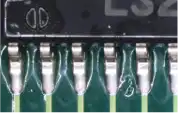 Before flux cleaning |
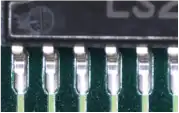 After flux cleaning |
Evaluation target : Residues in general
It is used to check for contaminants that are not optically visible. Observation of organic materials requires proper adjustment of acceleration voltage, and also require skill; if an EDX (energy dispersive X-ray analyzer) is included, the characteristic X-rays generated by electron irradiation can be used to identify elements contained in the stains.
■Example of observation of solder bumps
The stereo microscope observation on the left does not show any residue, but the SEM observation on the right shows organic residue at the bump tip. | |
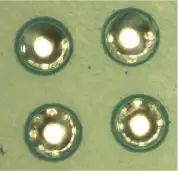 Observation under an optical microscope |
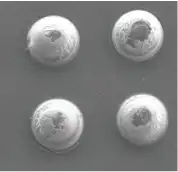 Observation under SEM |
Evaluation target : Rosin and fluorescent substances
Some components of natural rosin emit fluorescence when irradiated with near-ultraviolet light. Since the residue emits light, the presence or absence of flux residue can be qualitatively determined at a glance. Note that water-soluble fluxes, for example, may not contain fluorescent substances. It is difficult to distinguish residues on such as glass epoxy substrates that are themselves photosensitive.
■Example of near-ultraviolet light observation
 Before flux cleaning |
 After flux cleaning |
Applicable for post-cleaning evaluation of final products. It can quantify residue, but is not suitable for identifying the location of stains or evaluating resin stains (non-ionic stains).
Evaluation target : Products after flux cleaning
A method for converting the degree of contamination to NaCl from the change in conductivity when the ionic components remaining on the surface of the substrate after cleaning are extracted using a mixture of IPA and pure water = 75:25. This method has been used conventionally, and has been standardized and standardized values have been set by MIL and J-stantdard*.
Applicable to products after cleaning, etc. However, stains that are not soluble in water or IPA, the extraction solvents, will not be detected.
*MIL:United States Military Standard
A generic term for standards used to procure various supplies needed by the U.S. military.
*J-Standard:
J-STD-001 Requirements for Electrical and Electronic Assemblies to be soldered has been adopted worldwide as the international standard for soldering operations in the electronics industry.
Evaluation target : Products after flux cleaning
A method to detect ionic substances by multiplying a liquid extracted from the target of evaluation by an ion column. Ionic substances (halogens and heavy metals) to be removed can be detected with high sensitivity, but those that do not ionize cannot be detected. Contaminants that do not dissolve in the extraction solvent, such as insoluble metal salts, may not be detected.
This is a qualitative analysis used to identify the origin of unidentified residues. In general, it is characterized by the high cost of analytical equipment and the skill required to analyze the results.
Evaluation target : Surface foreign material, stain-like residue
A method of irradiating light in the infrared region onto a target surface and analyzing the light absorption spectrum to estimate what kind of organic material is present on the surface. Measurement is relatively simple; however, substances that do not show IR absorption or stains that do not have thickness cannot be detected. It is very suitable for applications to identify what components are contained in the stain by comparing with existing data, but the results of IR analysis alone do not strictly identify even the molecular structure of the stain.
IR Analysis chart(Rosin) |
IR Analysis chart(the surface of subsrate after flux cleaning) |
Evaluation target : Surface foreign material, stain-like residue
This is elemental analysis by means of characteristic X-rays generated from the object to be analyzed. The state of each element (single or compound) cannot be distinguished. It is necessary to be careful when analyzing because it reads information other than that of the topmost surface.
■Example of SEM observation image and EDX analysis of a workpiece after flux cleaning.
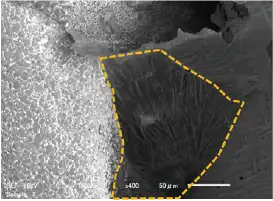 SEM Observation image |
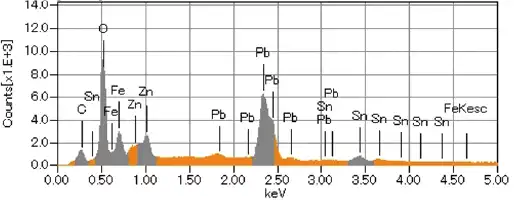 EDI Analysis result |
| EDX analysis of the foreign matter adhering to the solder surface (orange dotted line) revealed that the lead in the solder eluted and reacted during the cleaning process and precipitated. | |
Evaluation target : Surface foreign material, stain-like residue
A method of elemental analysis using photoelectrons generated from an analyzed object. The state (number) of elements can be determined, making it possible to estimate compounds. It is also possible to read information only on the topmost surface.
■Example of XPS analysis chart of flux residue resin film
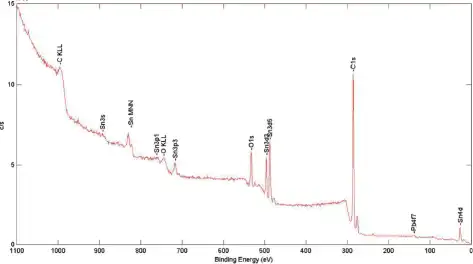
Evaluates insulation properties and the occurrence of migration by applying voltage to a comb substrate in a high-temperature, high-humidity environment. Generally, migration does not occur with no-clean flux, so this method is not suitable for cleaning evaluation.
■Comb substrates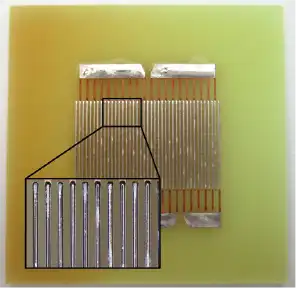 |
■Continuous measurement chart of surface insulation resistance during migration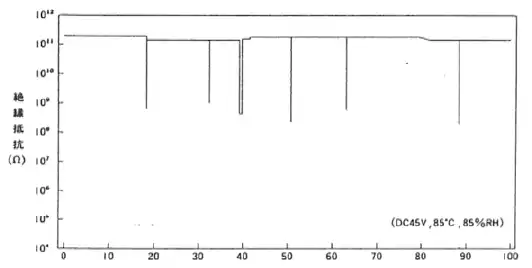 |
Contaminants such as salts and surfactants on the surface of electrical circuits after flux cleaning cause dielectric loss (tanθ) to increase due to moisture absorption by the salts and surfactants in a high humidity environment. Depending on the cleaning agent, the dielectric loss after flux cleaning may be worse than the initial value of the substrate. Therefore, it is necessary to select an appropriate cleaning method when cleaning electronic circuits.
■Table of dielectric loss measurements |
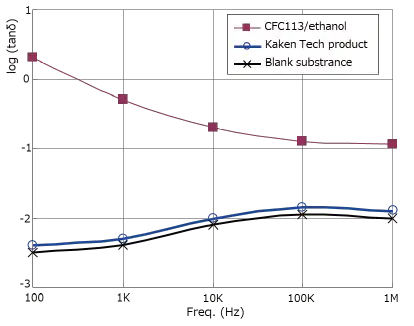 |
| ■Evaluation Overview Solder paste for evaluation is baked onto JIS 2 type comb electrode and cleaned under the specified conditions. After that, it is left in a 97%RH environment for 1 hour in a moisture-absorbing state, and then applied to a precision LCR meter to obtain the dielectric loss value in the frequency range of 100Hz to 1MHz. |
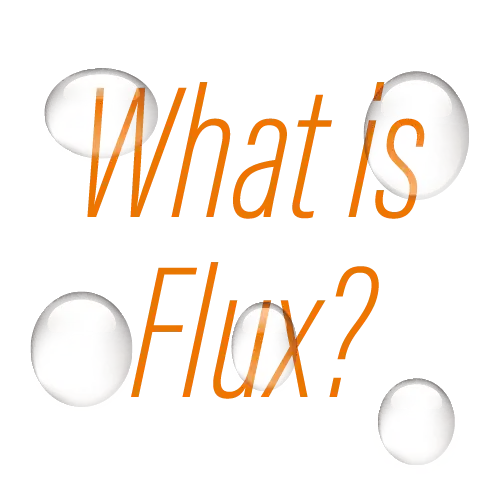 |
PCB Mounting Columns
|
|---|---|
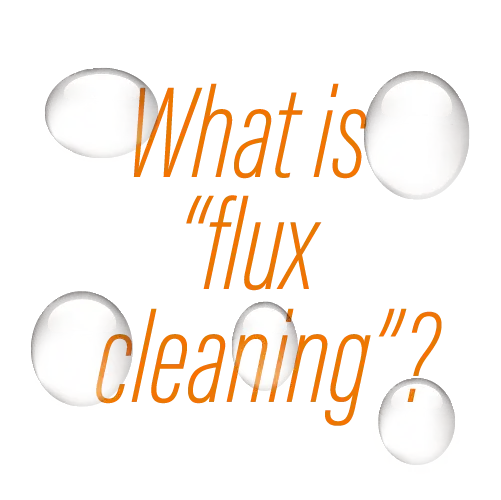 |
Trouble solution
|
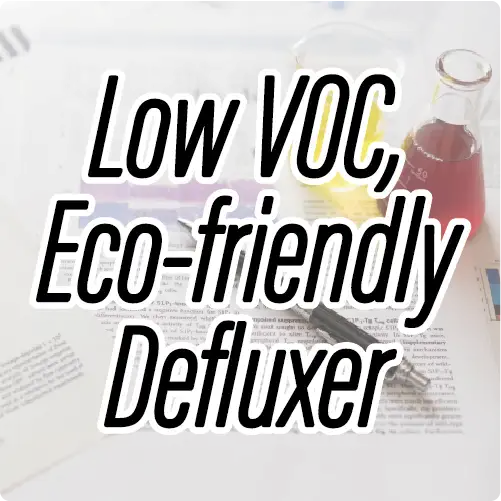 |
Technial report
|
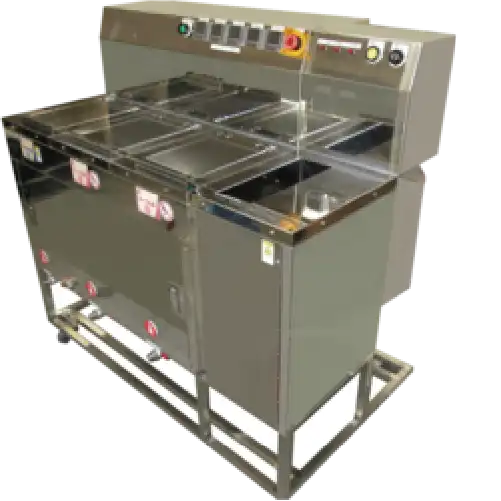 |
Products information
|
MARKESS® is a trademark of KAKEN TECH CO., LTD. in PRC.
KAKEN TECH, MICROCLEANER, MICROCLEAN&MARKLESS and MARKLESS are trademarks of KAKEN TECH CO., LTD. in PRC.
KAKEN TECH is a trademark of KAKEN TECH CO., LTD. in the U.S..
| Inquiry |